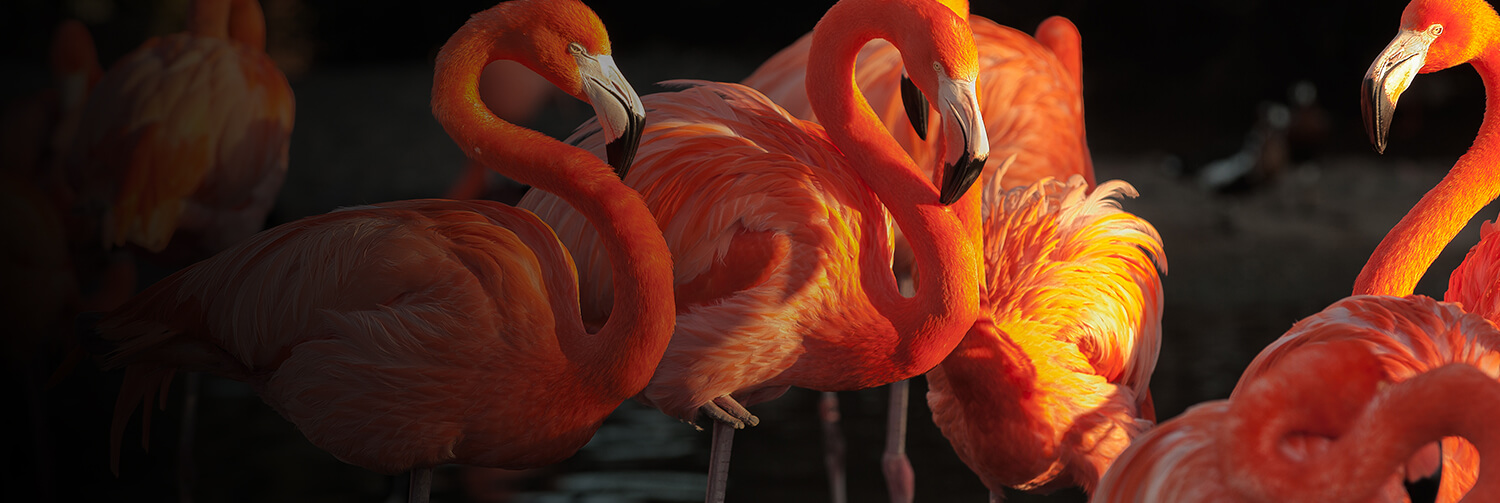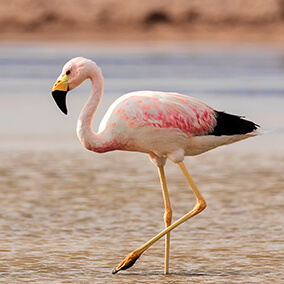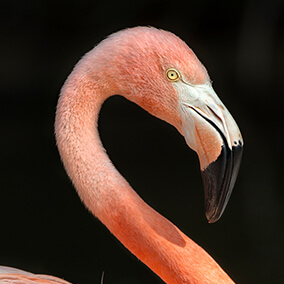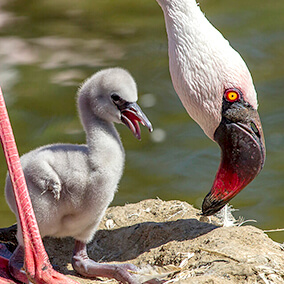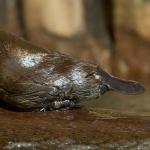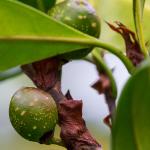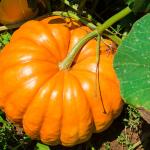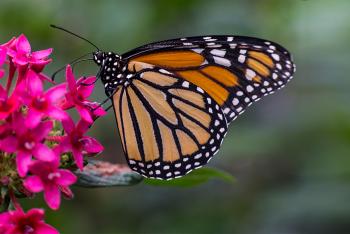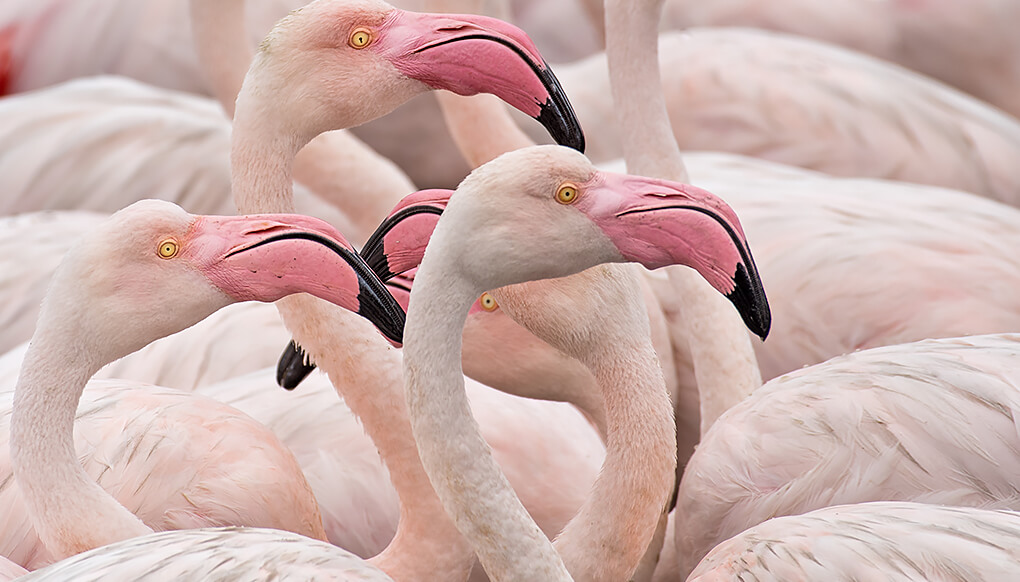
Flamingo

Birds


Some Threatened
facts

The greater flamingo is the tallest, ranging from 3.9 to 4.7 feet tall. The shortest? That's the lesser flamingo, which measures from 2.6 to 2.9 feet in height.
Flamingos eat crabs, lobsters, crayfish, shrimps, prawns, krill, woodlice, and barnacles. Some species have beaks specially adapted to catch food in their habitat.

description
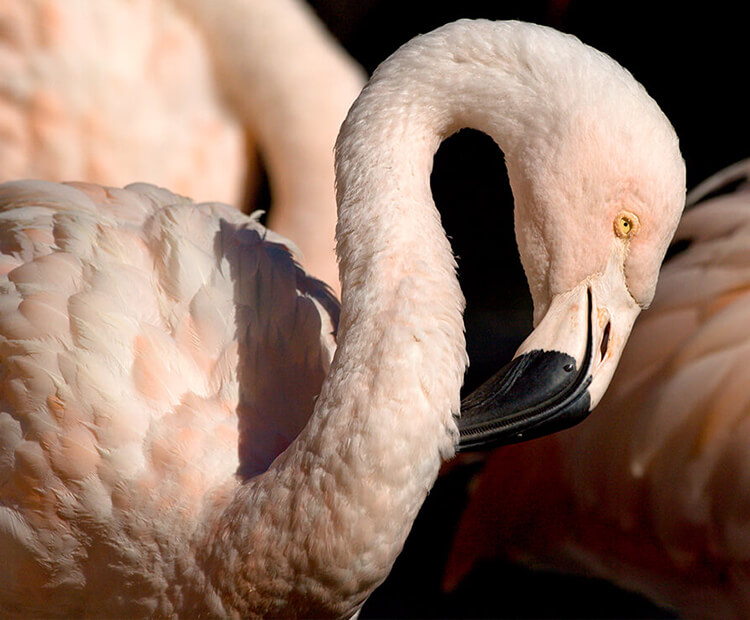
Bright birds
With their bright pink or reddish coloring, it's hard to mistake the flamingo for any other bird! There are six species of flamingos: Greater, Chilean, lesser, Andean, puna or James's; and American or Caribbean. Their color comes from the foods they eat, like algae and small crustaceans (including crabs, shrimp, crayfish, prawns, barnacles, and more). American (also called Caribbean) flamingos are the brightest, showing their true colors of red, pink, or orange on their legs, bills, and faces.
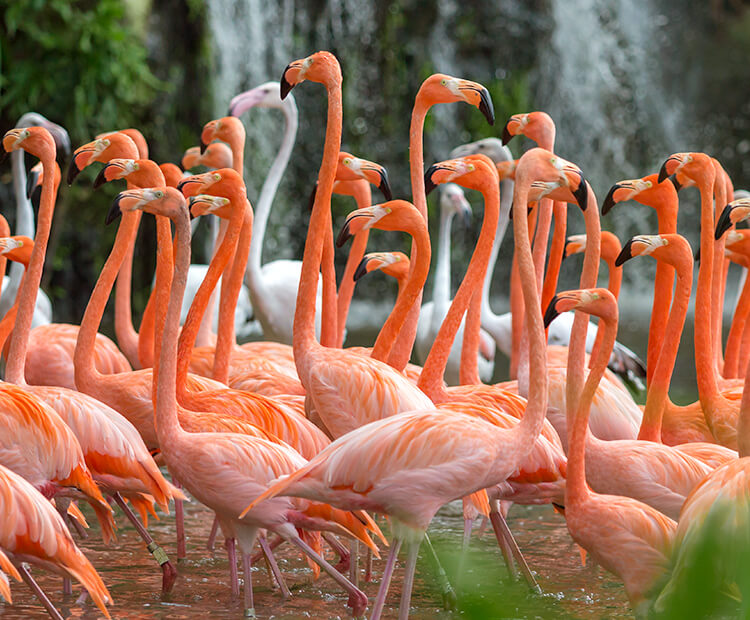
The more the merrier
Flamingos love company! They are social birds and live in groups of varying sizes, from a few pairs to sometimes thousands or tens of thousands. When there are a lot of flamingos together, their displays to attract mates are amazing to watch. Marching, head-flagging (from side to side), wing saluting and twist-preening can all be part of the display.
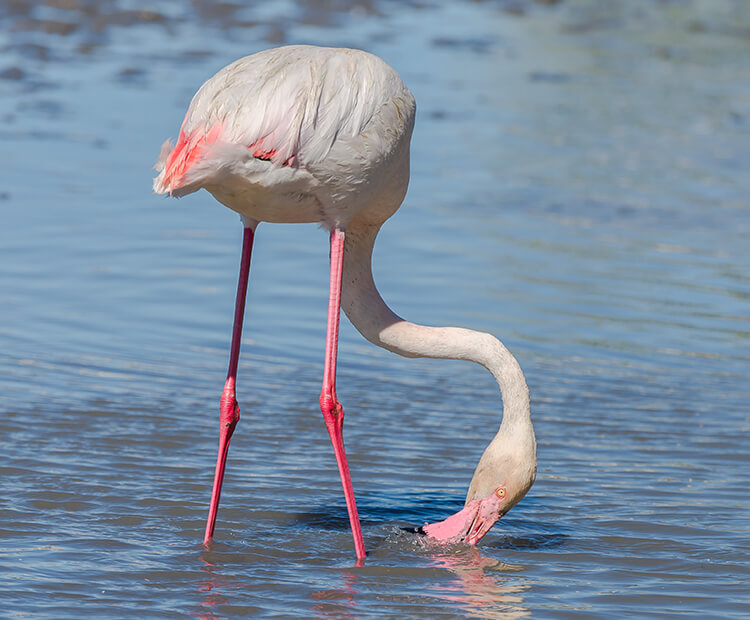
Eat up!
Long legs let flamingos wade into deeper water than most other birds to look for food. And speaking of food, flamingos also have very distinctive eating habits. The bill is held upside down in the water. Flamingos feed by sucking water and mud in at the front of the bill and then pumping it out again at the sides.
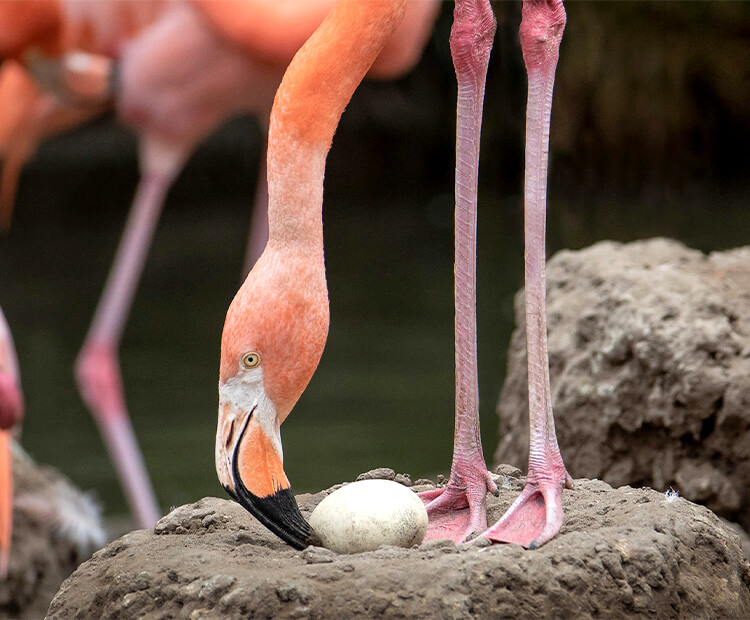
Home life
When it's time to raise their young, flamingos build a nest that is different from most other birds. They make a mound of mud about 1 to 2 feet tall. The nest needs to be high enough to protect the egg from flooding. Both the male and female build the nest by using their bills to pull mud toward their feet. The top of the mound is shaped so that any egg laid does not fall off. After about a month's incubation, the egg hatches. A newly hatched flamingo chick has gray down feathers and is the size of a tennis ball. It stays on the nest mound for a week or so.

